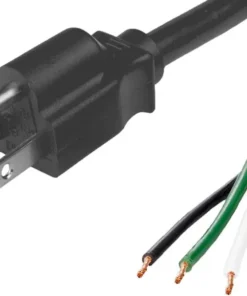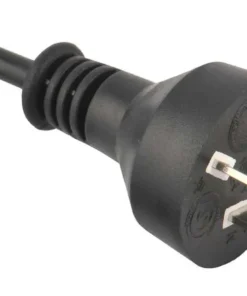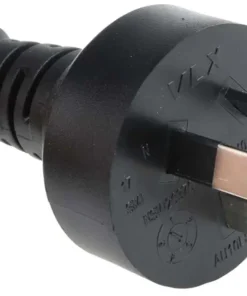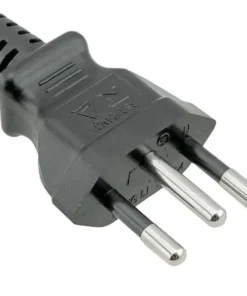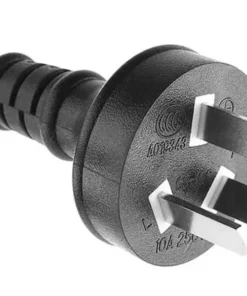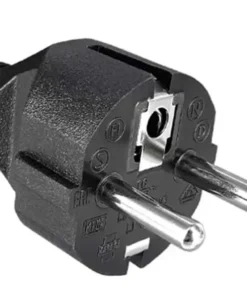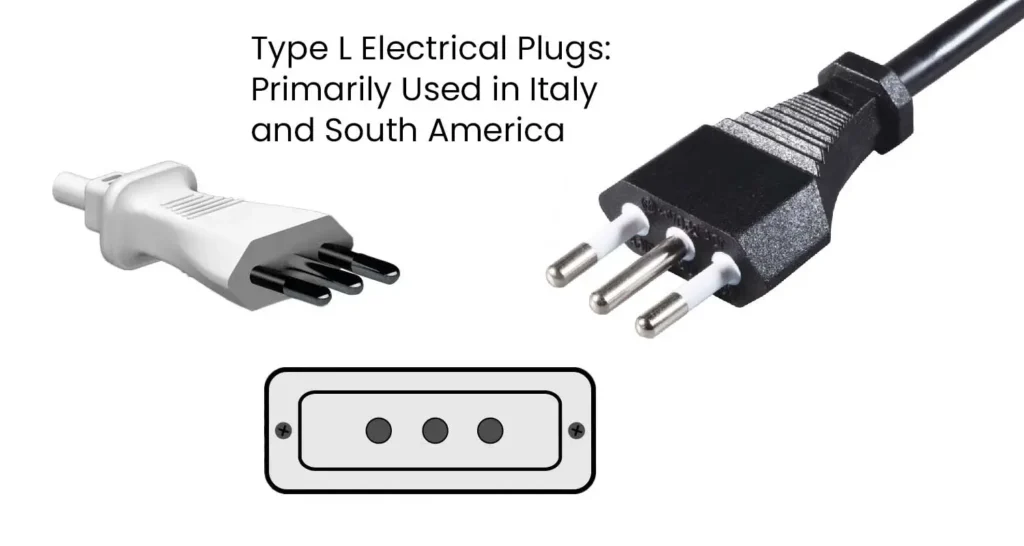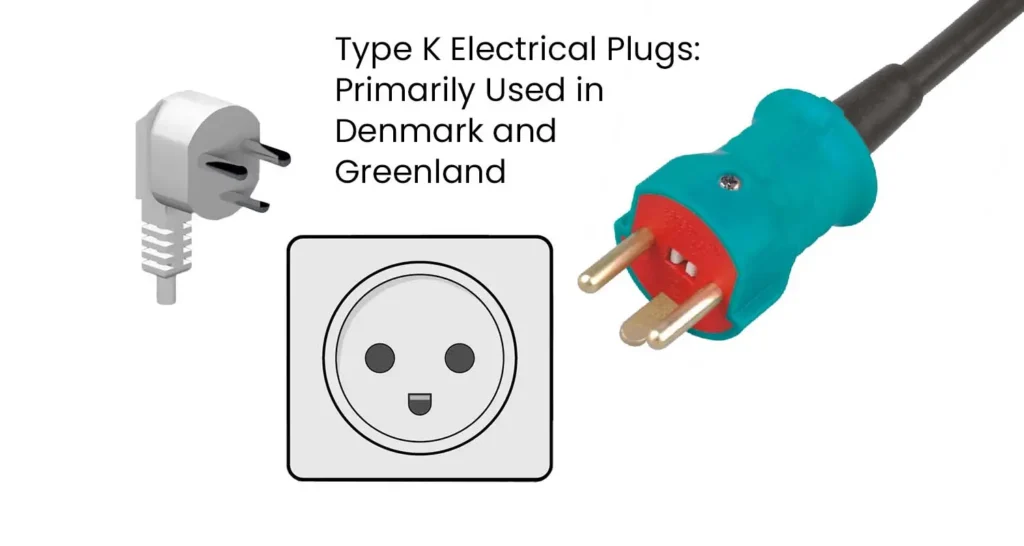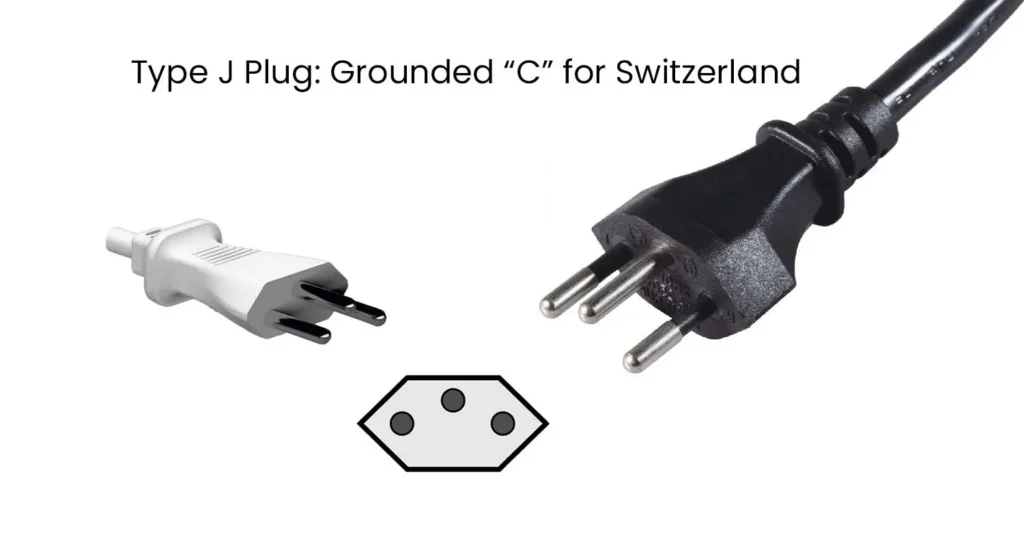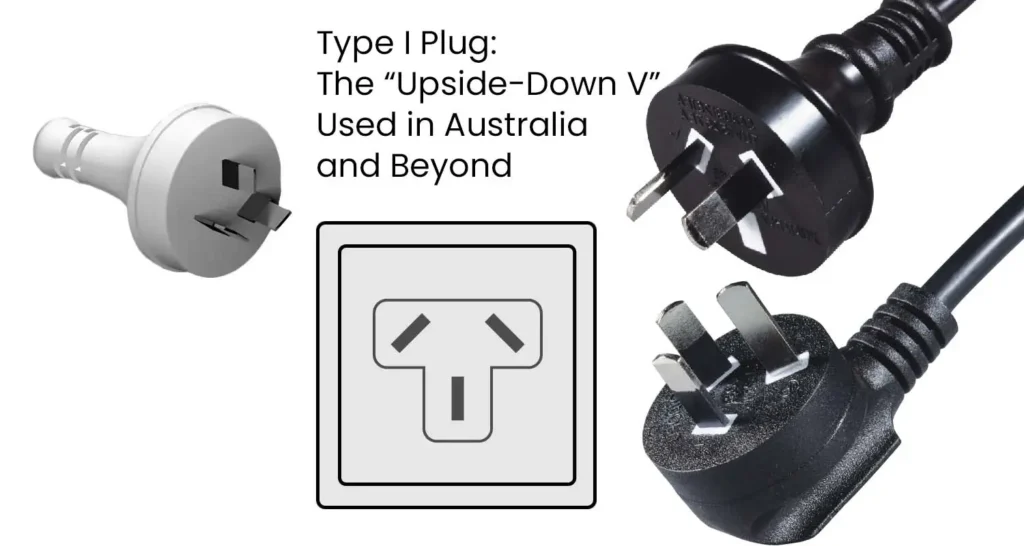Main usage: Italy, Chile, Uruguay, with scattered use in North Africa. Features: Two versions:Both grounded, differing in amperage and pin size/spacing: 10 amp version:Three round pins (4 mm diameter), 19 mm length, 19 mm center-to-center spacing between line and neutral pins. Compatible with type C plugs. 16 amp version:Three round pins (5 mm diameter), 19 […]
Usage: Primarily found in Denmark and Greenland. Features: Unique design: Three-pronged plug with a U-shaped grounding pin on the plug itself, unlike similar type E which has the pin in the socket. Technical specifications: Round line and neutral pins: 4.8 mm diameter, 19 mm length, 19 mm center-to-center spacing. U-shaped grounding pin: 14 mm length, 4 […]
Type J is the primary plug standard used in Switzerland and Liechtenstein. It resembles the type C plug with the addition of a grounding pin, providing enhanced safety. Key features: Three round prongs: Similar to type C but with an additional central grounding pin. 4 mm round pins measuring 19 mm in length. Partially or […]
Type I, known for its upside-down V-shaped prongs, is primarily used in Australia, New Zealand, and several other countries. This plug offers features that prioritize safety and compatibility. Key features: Two flat, insulated blades at an angle, spaced 13.7 mm apart. Central grounding pin (optional) for additional safety. Available in 10 amp and 15 amp […]
Type H, the only plug type used in Israel and Palestine, poses significant safety concerns and should be handled with extreme caution. Key features: Three round, uninsulated prongs forming a triangle. Limited compatibility: Primarily fits type H sockets and some type C plugs. Not grounded when used with type E or F plugs (forcing such […]
Type G, also known as the BS 1363 plug, is the dominant standard in the UK, Ireland, and several other countries. This three-pronged plug features unique safety and design elements. Key features: Three rectangular prongs forming an isosceles triangle. Central grounding pin for safety. 9 mm insulated sleeves on pins for added protection. Built-in fuses […]
Type F, also known as Schuko (meaning “protection contact” in German), is a widely used plug in Germany, Austria, the Netherlands, and many other European countries. Key features: Round shape with two 4.8 mm round pins spaced 19 mm apart. Top and bottom earthing clips for safe grounding. Slightly non-circular with notches for increased stability […]
Type E plugs are primarily used in France, Belgium, Poland, and several other countries. They differ slightly from the type F plugs commonly found in Germany and other parts of continental Europe. Key features: Similar to type C but round and with a female grounding contact. Accepts the grounding pin of type E sockets. Compatible […]
Type D plugs, primarily used in India and Nepal, are known for their safety concerns. While still in use, these plugs are considered outdated in many regions. Key features: Three round prongs in a triangular shape. Uninsulated pins: Risk of electrical shock if touched when partially inserted. Non-grounded: Can cause sparks and circuit breaker trips […]
The most common type C plug, rated for low power (2.5 amps), is mainly used for low-energy appliances in most European countries (except UK, Ireland, Malta, and Cyprus). This two-pronged, ungrounded plug is known as the Europlug (CEE 7/16). Key features: Two 4 mm round pins spaced 18.6 mm apart. 10 mm long insulated sleeves […]
